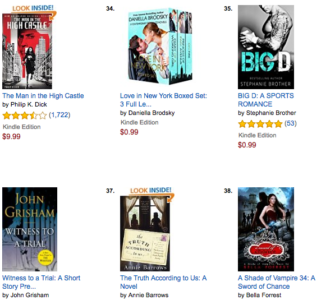People are often confounded about what goes into a novel, and I’ve blogged about plenty of them—research, reading, and planning. And in the display at Civic Library, Canberra, I’ve attempted to visually display two authentic examples of the various elements that led to my first novel, DIARY OF A WORKING GIRL (filmed as BEAUTY & THE BRIEFCASE), and to my most recent novel, VIVIAN RISING.
DIARY was my first published novel (the first non-published one is gathering dust in a box—rightfully so). And when I look back at the inspiration and research that went into it, I realize that in some way, I’d been researching my first novel my whole life. I’m guessing this isn’t a rarity among novelists, since it’s common to use the familiar as fodder for your first book. It’s a good exercise in learning how real-life experience can authenticate a novel, but doesn’t in itself make a novel (surprise! Our lives are not as compelling as we imagine!).
In the DIARY display I heaped, among other things, the kind of expensive swag that was quite an exciting element of lifestyle journalism to an unsophisticated schlub with grease monkey roots like myself. These items presented a novel experience to me: having luxuries I could never afford, while the electric company buzzed to say they were cutting my unpaid-for power (true story). It was this migration into this elite, but intimate (and a bit boring if you’d like to know the truth), circle of New York’s It list that for the most part removed me—in many ways—from the regular kinds of events that would have me mixing with men I might be interested in dating. Instead, I was—dateless—attending lipstick launches and perfume parties. It didn’t take long until my initial financial security of branching out on my own had turned, either—with my biggest client going bust. This all culminated around Valentine’s Day 2001, which I spent with four single women (one of which was my close friend, the rest ehhh), at the most poorly-attended launch party I’d ever been to. The quagmire of navigating out of my negative circumstances led me to imagine a fictionalized solution I wouldn’t have considered in real-life. I decided to start writing the next morning. When the draft was finished and sold one month later, I had a real-life solution, too.
But the seeds of DIARY had been sown much earlier than that. I’d worked in international publishing, and before it was even heard of in American, my boss had brought back from London a copy of two novels: Bridget Jones Diary and Does My Bum Look Big in This? These books hit such a personal chord because, since high school, I’d never read anything that seemed to speak so realistically to the life phase I was in. I was encouraged when the genre grew. That novel in my cupboard? Well the rejection feedback had been strong in one major area: You’ve tried to be too serious. It’s your humor that’s key to your tone. Don’t leave it out. And then there was the influence of all the articles I’d pitched and written. And the excitement of attending fashion week and mixing with that crowd, the friends I had at the time, the kinds of challenges and jobs they had, their strengths and weaknesses.
VIVIAN RISING had a very different trajectory. I’d already written seven and a half novels (two and a half of which wound up on the scrap heap). I was as surprised as anyone when there I was facing the blank screen and came up with Vivian, locked in the ensuite bathroom of her grandmother’s hospital room. The inspiration nugget must have been the loss of my own grandmother/closest friend a couple of years earlier. It wasn’t a conscious decision to go there, but an interesting one, I think, when you consider how the brain works. As the characters and place began to crystallize and become strong entities of their own, the book became about so many things: the cultural history of Brighton Beach, Brooklyn, the polarizing and—love it or consider it bull-honkey—emotionally enlightening topic of astrology, grief, the unique relationships between grandparents and their grandkids. It was during the editing of this book that I became obsessed with second-hand non-fiction books and the unique, vast ways they can enhance a story. Reading always enhances and influences the way your story unfolds itself, and reading Lorrie Moore and Mona Simpson and Janet Fitch brought me to realize that in my mind, giving the reader the most heightened emotional experience was what made for the best books. And since Vivian Rising many would say this is my hallmark. When you research, one nugget leads to another and another (see my previous blog about research), and this enlightening process organically leads your story along its arc. I don’t get stuck in what a book’s format “should” be, and neither should you. Once you get your characters and their conflicts right, they’ll always point you in the right direction.
Now, if you saw the display case at Civic Library in Canberra (pictured), you’re probably busting to know what an ARC is at this point. Here in Canberra we’re used to abbreviations, and so you won’t be surprised to find this is yet another, standing for Advanced Reader Copy. This plain-cover book is normally created before the copy-edit stage (meaning there’ll be lots of dumb mistakes and without question, overwritten bits that need to be cut), so that you can send an advanced read out to the magazine and newspaper editors who work with long lead times. So, if your book comes out in February, this ARC would ideally go out some time around November (all too often it’s much later!). If you’d like to win a VIVIAN RISING ARC, just comment below with the word ‘ENTER’. Don’t be afraid to add any questions or comments, either.
Best,
Daniella



Leave a Reply